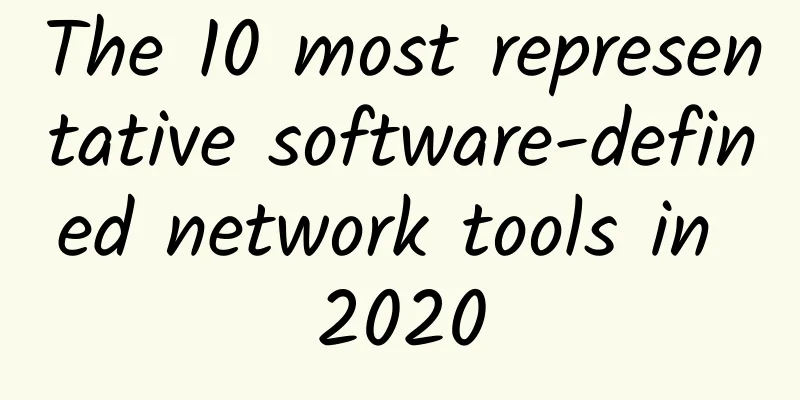JD.com's Lv Jianwei: Black technology leads the new era of e-commerce

|
[51CTO.com original article] On July 21-22, 2017, the WOTI2017 Global Innovation Technology Summit with the theme of artificial intelligence, hosted by 51CTO, was grandly held at the Beijing Renaissance Hotel. During the summit, 30+ AI stars, dozens of wonderful speeches and roundtable forums on the theme of artificial intelligence were slowly unveiled. In addition to the wonderful speeches in the venue, there were also hands-on laboratories and technology experience areas built specifically for AI enthusiasts outside the venue, all of which made this conference full of highlights. On the morning of July 21, at the main venue of WOTI2017, JD.com’s technical strategy expert Lv Jianwei gave a wonderful speech entitled “Black Technology: A New Era of E-commerce”. The following is the transcript of the speech, let’s take a sneak peek!
Mr. Lv Jianwei, JD.com’s technical strategy expert Lv Jianwei: I am very happy that the organizer of 51CTO invited me. I was very nervous when I received the invitation, because I have participated in many technical conferences over the years. But since I joined JD.com, I have started to transform and focus on more solutions and more customers. So in the past few years at JD.com, I usually spend time with corporate information leaders and government IT planners. So the time I spend with our technical people has become shorter and shorter. I am very nervous to stand on this stage today, and I don't know how much value I can bring to you. But I still hope to be like when I was a CTO in the past. Whether it is from the perspective of technical architecture, technical platform building, R&D management, or personnel innovation, I believe that our WOTI conference is a very influential and largest technical conference in China and even in the world, and each of us here is a student who is relatively strong in technical and management positions. So, maybe what I talked about today is the topic and perspective of business technology plus innovation as the opening of today. More business details or technical details may be heard in more professional sub-venues in our next two days. My first speech today is equivalent to giving you a starting point. I will give you an overview and introduction of JD.com's achievements in artificial intelligence, VR/AR, many smart hardware, smart data, and many related innovative applications and technologies over the past few years. I hope you will know how China is a pioneer in using technology to drive growth, and even become the world's leading enterprise. First of all, let me review. Whether you are a CTO or a technical backbone, everyone here will have this confusion, especially in this era, there are open source frameworks for artificial intelligence. Many large companies such as Google are releasing, including artificial intelligence algorithm packages and smart technology learning algorithm packages, which are also open source for everyone. We also provide many cloud computing platforms, so that everyone can quickly build our artificial intelligence machines online. But when I communicate with many people, everyone has a feeling that there are so many good resource platforms, open source technologies, and open source engines, but they find that they don’t know what to do. We have the technology but we don’t know what to do with it. This is a very painful problem. Many people also want to start a business with artificial intelligence, but what can artificial intelligence start-ups do? This is what I want to start with as the main point today. First of all, I personally agree with one point very much, including why I joined JD.com. It is very important that JD.com is a transaction-oriented company. I believe that some of you are in the Internet industry and some are in enterprise IT. The Internet is more about marketing traffic, but there is a world of difference between marketing traffic and transactions. It is like Baidu wants to do e-commerce. It is difficult to do it. Tencent has strong traffic, but it is also difficult to do e-commerce. Only when the transaction is completed can it truly bring the final value to the customer, because this is to pay for it. This is an important reason why I joined JD.com at that time. So the idea of my speech to you today is to start with transactions first. How can artificial intelligence help us provide more transaction conversion and repurchase? This is my idea. Especially in the past thirty years, no matter whether you are in enterprise IT or enterprise Internet, you will find that in the past three years there have been a large number of startups in enterprise services, cloud computing, big data, and enterprise SaaS, but how did such an era come about? Let me go through the clues here. First, in 1997, China's Internet began to have three major portals, such as Sina and NetEase. At that time, these portals brought Internet content and communities, including Baidu, which brought Internet search engines. They all brought a lot of information precipitation and information aggregation. But how do they convert transactions? This came to the beginning of 2003, when Taobao was established. This was a very watershed sign for China's e-commerce. So from retail transactions to service transactions to warehousing and logistics, payment and finance, this is the entire e-commerce closed-loop process. In 2003, although Taobao was established, JD.com developed by leaps and bounds in 2010, including the establishment of Meituan in 2010. These are very important signs in retail e-commerce and service e-commerce. However, we can also see that although enterprise SaaS was created in 2006, real enterprise services started in 2011 with cloud computing, big data, and enterprise SaaS. There is a logic here, that is, our e-commerce may be a front-end trading platform, but in the future it may be warehousing and logistics, or even more order settlement contracts and invoices, which are all back-end operations of enterprises and the coordination of the enterprise industry chain. When should we go in the future? That is, to the present in 2017, what is it now? As you can see, whether it is the new retail proposed by Alibaba or the fourth retail revolution proposed by JD.com, we have a very clear understanding of it now, including everyone here, especially those who are engaged in the Internet, who may feel more deeply that online traffic is gradually flowing offline or converting to offline. In the future, more traffic will be offline, so how to track offline traffic with technology is very important. This is what I talked about today about how artificial intelligence can track offline traffic, including how to track online products. How to unify transactions online and offline, how to unify and integrate portraits, this is the focus of our attention today. Many people are exploring. We need to find a successful model, or who is leading, who is the benchmark. From JD.com's perspective, I personally feel that JD.com is more in line with more Chinese companies. Why do I say that? When I joined JD.com, I had several choices: joining Tencent, joining Alibaba, or joining JD.com. All three of them gave me many invitations. But when I chose to join JD.com, JD.com was particularly like many Chinese companies. What is it? Large organizations. Many Chinese companies, whether they are export-oriented manufacturing or processing, or state-owned enterprises, are large. This is a very distinctive feature of China. The second is self-operated e-commerce, engaging in e-commerce by themselves, rather than building a platform. The other is offline heavy assets, which is very similar to traditional customer business. Therefore, many practices of JD.com represent a model for China's future offline construction of innovative technology applications. Many explorations that JD.com is doing now are more in line with our reality. Let's take a look at what technical reserves JD has made for its online and offline integration. Here I will introduce a very large system, which are all the technical reserves JD has made for the new era. First of all, from the application point of view, JD cuts into transactions, from marketing, transactions to the back end of the enterprise, and provides key technical support throughout, whether it is online click flow or offline statistics, or online and offline integrated user behavior tracking, there are many marketing technologies embedded in it. In terms of transactions, although JD also has very mature online e-commerce operations, including warehousing and logistics operations, and even drones and unmanned vehicles embedded with artificial intelligence automation technology, in the back-end processing of the enterprise, such as a large amount of audio and video processing, audio and video processing also uses a lot of audio and video artificial intelligence. I will expand on these distinctive features to you one by one in a while. These are all applications, but supporting applications requires a lot of technical foundation middleware. I believe that everyone will definitely use these middleware in building online and offline integrated applications, whether it is mobile payment technology or electronic invoice technology, including real-time positioning technology in mobile maps, these will be essential technologies for everyone in the future. In the future, we will have more applications in hybrid cloud and integrate online and offline applications. Therefore, VPI network technology and microservice workflow technology will play a good role in hybrid deployment and connection. Let's look at application middleware. JD.com has established its own smart hardware company since 2014. It has smart IoT sensors. The real-time information of many smart hardware can be uploaded to the cloud for technical analysis and smart interconnection. JD.com has also established an artificial intelligence laboratory, and there are about 50 doctoral researchers in Silicon Valley who are building cutting-edge artificial intelligence algorithms. So, JD.com also launched its own machine learning platform not long ago. Of course, data is indispensable under these supports. I sent a message in WeChat Moments the other day, and I guess you all agree with it. The core of artificial intelligence is actually data, and data processing is the largest workload of artificial intelligence. In other words, artificial intelligence is essentially labor-intensive. Many of its data are labeled and standardized, and even processed. You can only be accurate if you feed it a large amount of standardized data. Therefore, a complete big data platform is needed. Of course, if you want to store big data, you need a very solid and unified cloud computing platform. So why does JD.com want to do cloud computing, big data platform, artificial intelligence platform and some business application engines and middleware on it? It is to bring a complete technical strategy to future business and technology. I will just give you a brief introduction today, and there may be more details in the next two days. Let's start to unfold how JD.com has done some smart things layer by layer. First of all, your product level needs to be intelligent. I just talked about how to track user behavior. There are two stages here: one stage is how to track user purchase behavior. Now I will introduce how to track user usage behavior, including in the e-commerce era, you can't track it. When users buy, you can of course track the click stream and the user's entire behavior. But once the user buys the product back to his home, you don't know how he uses it. Whether he uses it well or not is hidden in the cabinet and you don't know. So we must make smart hardware to track user usage behavior. This is a very critical role of smart hardware. As everyone knows, JD.com released a smart refrigerator this year. This is done together with Midea. Midea provides refrigerators, and we provide smart technology. It knows every product you put in. When you put an egg in, it knows that there is an extra egg in your refrigerator. It can identify the item, and it will unlock it when you take it. This is a large number of things that use artificial intelligence. We have done a lot of identification for product identification. JD.com has a lot of SKU product pictures, and we identify the accuracy of items every day. The second one is JD Dingdong smart speaker. There are many aging cities in China now. In Shanghai, one out of every four people is 60 years old. It is very inconvenient for the elderly to use smartphones. If these consumers can get better product orders or even access Internet information through voice interaction, voice interactive speakers are very necessary. And we also regard voice speakers as a smart server or hub for a family. This is its strategic position. Three years ago, everyone should still remember the smart router war. In fact, smart routers are equivalent to home servers or hubs. This is its strategic position. But people often hide routers behind their backs and cannot see them. So how can all the smart hardware access information in the home be detected, connected, and edge computing be performed? Smart speakers are its core, and I think its technical value is greater. The third is the Alpha smart platform released in April this year, which includes a machine learning platform, an artificial intelligence algorithm package, and all the data that JD has trained and has passed strict standards are output here. Of course, JD also has good marketing traffic to help you connect these. If you produce a lot of smart hardware products, JD can also help you connect. So you can go back and search the Baidu platform to see what the Alpha smart platform contains. It can provide you with a lot of integrated services from technology to business. Let's look at marketing. As I just mentioned, from marketing to transactions, these are all key links. JD.com is an e-commerce website. When you buy things online, you can only look at pictures, photos, and screens, and then you place an order. Many of JD.com's products are 3,000 or 5,000 IT hardware 3C products. But do you want to feel the product more? Especially now that JD.com is selling clothing, it needs more experience-based products. How to make these experience-based products more perceptible online? This is the importance of our VR/AR. So, JD.com also established a VR/AR technology company last year and launched many VR/AR products and technologies. If you want to buy some home furniture on JD.com, you can use your mobile phone to shoot your room, and then put JD.com's products in it. You can feel what it will feel like when this chair is placed in your room, so that you can know whether you are suitable to buy this chair. JD.com also has 3D displays and some VR technologies. You can not only see the photos you have taken, but you can also flip and see them 360 degrees. These are all JD's innovations in VR technology, including VR virtual fitting. You can take a photo of your head portrait, and it can present a virtual image on your phone. You can change clothes and match many JD products with your fingers, and it will be completely integrated with your VR virtual portrait. This is the technology of virtual fitting. Another is live broadcast technology. An important part of live broadcast technology is voice beautification, video beautification, and barrage filtering. Artificial intelligence technology is embedded here, which requires quick identification. You can't say that a barrage will appear after one or two minutes. It can prevent him from sending illegal information and give him a good experience. Let's look at e-commerce transactions. First of all, JD's e-commerce transactions are a set of IT systems that are fully equipped with orders from transactions to marketing. I won't go into detail. Let's look at JD's Kepler system. JD's products can be sold on everyone's traffic website, but what is embedded here is our smart pricing, that is, how to match the traffic quality or price on your website with our products, which products are suitable for display on your website, and at what price. The Kepler system calculates these behind the scenes. For example, if your website is more oriented to mothers and children, we will show you more related products on your website, and the pricing is also matched with the user portraits on your website. There are so many applications behind the technology. In addition, after the transaction is completed, you must pay. JD's wallet JD Pay can now not only scan and pay, but also fingerprint payment and face payment. When I just finished the PPT, JD also released near-field payment, which will automatically pay when you get close to the payment device. Therefore, these smart payments also make extensive use of artificial intelligence technology, including JD.com, which now uses JIMI smart robots for more than 30% of customer service reception. In particular, as you all know, many people on JD.com will ask where my order is and when my return will be returned. For these common questions, you have no idea whether it is JD.com’s human or JD.com’s smart robot that is replying to you. Therefore, we have also carried out a lot of research and development and training of JIMI smart customer service robots. This technology will also be fully open to everyone this year, and everyone will use mature and trained smart robots to bring everyone the benefits of business embedding. I just talked about the many technologies of JD.com in artificial intelligence and machine learning that you can see on the online virtual side. This is the so-called touch technology of JD.com that you can see. First, what can AR do? JD.com uses AR to do warehouse planning, such as how to place the shelves of the warehouse, whether this warehouse is suitable to be placed here, you can't say I move the shelves and see if it can be placed after moving, the cost is very high. So when we want to plan a place, how should it combine the warehouse shelves? We first use our VR technology to virtualize whether it can be put up. This is a very valuable technical application for JD.com's warehouse. Let's take a look at the unmanned warehouse. JD.com and the Institute of Automation of the Chinese Academy of Sciences have done a lot of research and development of automation equipment. You can search for this audio and video on the Internet. I only took some screenshots today. All these unmanned warehouses and unmanned vehicles can automatically find the path. Where to pick up the goods and where to put the goods, they all find the path automatically, and these cars go very fast, without human intervention, and they will not collide with each other. This requires a very advanced, more commercial and practical than the college student robots playing football games we saw. In addition, in terms of drones, JD.com's drone delivery technology has been widely applied in the northwest. Northwest China is vast and sparsely populated, so we need drones to be sent from warehouses to distribution stations, and then delivered to consumers by our delivery staff. Drones are very useful in this area. In the past, we relied more on our GPS positioning, but now we have equipped it with more cameras to do more precise positioning. Let's take a look at the application. In addition to the robot just introduced, JD.com has two more robots. One is the information compliance review robot. We need to identify what illegal information is in the photo, including malicious orders, who placed malicious orders, who is a malicious user, who is a malicious review. We use our data to continuously train and train more accurately. This is the information compliance robot. Another part is the IT system stress test military exercise robot. JD.com will conduct three rounds of technical military exercises every year before the 618 promotion to prevent problems. It will imitate your behavior and operations. You click, you place orders, you make transactions and payments. This is all simulated user behavior generated by these backend scheduling robots. This is also a simulation of a lot of clickstream information in the past. We have a lot of real clickstream information data in the past. Our backend artificial intelligence is learning and has learned to simulate the access behavior of a real user. There are also many technologies here. Including JD.com's smart supply chain, in fact, there are more algorithm models here. And more inclined to business algorithm models. There are many in artificial intelligence machine learning, such as air tickets, especially in recent days due to weather delays, some planes are very tight. So, JD.com does a lot of calculations and predictions on air tickets, such as what the appropriate price will be in the next five days. There is also a lot of machine learning involved. JD.com does post-processing for enterprise services, which includes both fingerprint recognition and face recognition. JD.com's headquarters buildings now all have employee face recognition technology enabled. When you pass through the gate, it will recognize your face very quickly, and you can pass through in five seconds. A lot of artificial intelligence technology is also embedded here. Machine learning, JD.com officially released its own commercial machine learning platform last month, called Moon Landing. This platform is not like other products, such as the engine middleware released by Baidu. In order to further reduce the use of artificial intelligence, JD.com used to have to understand the principles of the algorithm package before calling the algorithm package. When you need to call the engine, you need to call VPI first, but when JD.com conducts artificial intelligence training and algorithm packages, it can be completely graphical. When you want to call an algorithm package, you pull it up, and you need to give the necessary parameters, and it can automatically train. Many machine learning algorithms and functions are graphical. Currently, these algorithms are supported, including the engine framework. Especially for related search, JD.com's related recommendations are becoming more and more accurate, and here they are also trained through a large number of collaborative filtering algorithms. In terms of big data, especially in the past three years, big data is more about storing big data, including computing big data, whether it is Hadoop or storage, but the core of artificial intelligence is the standardization of your data. If the data is not standardized, the more artificial intelligence is trained, the more confused it will be. Just like what was said some time ago about Facebook, two robots spoke some alien language to each other due to the wrong parameters. So data is very critical. In order to support clean and labeled data, JD.com has also made a lot of technical reserves. For example, blockchain technology, a lot of data is tampered with during the transmission process. A lot of data that you see is processed second-hand, third-hand or even more. If these data are not accurate, the whole training results will be lowered. So JD.com has involved blockchain technology in all data conversion and transmission chains, that is, every time the data is converted, circulated, or changed, it is all accounted on the blockchain. That is, your data has been changed, which is a very important aspect of blockchain technology. I believe that many people want to make some virtual currency-related products with blockchain technology, but JD.com has truly applied blockchain technology to business and data. So, JD.com also has a JD.com Wanxiang platform, which allows everyone to have more data, whether it is data from the Ministry of Public Security, social security data, civil affairs data, or operator data. A lot of data is gathered here for integration, circulation, and sharing. This is what the JD.com Wanxiang platform does, and the underlying technology is also blockchain technology for data circulation signatures. JD.com also provides a service that is open to the public, called portrait annotation service. Many people have a lot of data, but what kind of characteristics do these data have? You must be processing them manually or using clustering and classification artificial intelligence algorithms. However, JD.com now has labeled some of its own master data, such as user portraits and product portraits. JD.com even has more than 600 labels in user portraits. These labels are data accumulated and trained during JD.com's process. These portrait annotations can be combined with your data. When your user master data lacks labels, you can combine the data with JD.com. JD.com now has 220 million active users. These active user labels can be added to you, saving you the pain of training and processing. This will be very convenient for everyone and make everyone faster when doing artificial intelligence. ***, in order to support artificial intelligence, JD.com has also strengthened the hardware resources. In the past, we said that cloud computing is more about CPU computing. Whether it is NVIDIA or Google, these graphics computing are the core. General Intel CPU is no longer suitable for current artificial intelligence-specific computing. Therefore, in order to meet the needs of artificial intelligence computing, JD.com provides a lot of support on the cloud computing platform. First of all, you will see that JD.com provides the smallest container of Hummingbird, which is 64M at the smallest. What does it mean? Artificial intelligence training often requires you to feed it data and run an algorithm. This is a scheduling task. When it runs, you need to occupy resources. When it runs and produces results, you hope that the resources will be released because they are all trained in sections. So you are unlikely to rent several machines to run together, and it is all bursty. Therefore, JD.com provides this kind of container, allowing you to quickly deploy, quickly calculate, and quickly release after the calculation is completed. It is all task-oriented. Second, JD.com also cooperated with NVIDIA last month. The fastest GPU technology of NVIDIA is the P40. Therefore, it can achieve more than 15,300 stream processors and 96G video memory for artificial intelligence-specific cloud storage machines, bringing more high performance to artificial intelligence. Artificial intelligence requires a large amount of data storage, so JD.com has also released a massive storage server with 1.5T of memory for easy computing, and the local storage uses SSD storage technology. Many people say that JD Cloud Computing has been released for more than a year. What is the difference between it and other cloud computing? Let me summarize it here. JD originated from the sales of IT laptops, IT, graphics cards, hard drives, etc., so JD first did the best in terms of cloud computing resource guarantee. After all, we started from this. We have a lot of purchasing power and can get high-quality and well-priced goods. Therefore, cloud computing, whether it is cloud hosts, cloud hard drives or fast GPUs, is an advantage of JD. We want to make computing as fast as possible and have the largest capacity. This is the characteristic of our cloud computing. Therefore, today I did not bring you a particularly detailed introduction to how artificial intelligence is realized, but I will first give you a hint on what business applications artificial intelligence can bring good business value. This is something that every senior technical R&D personnel and technical R&D manager present here should think about. Using technology to truly drive the improvement of business value is the ultimate goal of all our pursuit of technology. Thank you very much! Thank you! 51CTO reporters will continue to bring you exciting reports from the WOTI2017 Global Innovation Technology Summit, so stay tuned! [51CTO original article, please indicate the original author and source as 51CTO.com when reprinting on partner sites] |
<<: Attention! Eight pitfalls in managing integrated cabling systems
>>: Zhang Hao from Ele.me: A food delivery guy sent by AI
Recommend
Why Remote Work Requires Mobile Unified Communications
When IT departments consider work-from-home strat...
Sharktech: 1Gbps unlimited traffic server starting at $79/month, Los Angeles & Denver data centers, 60Gbps high defense
Sharktech has no special offers recently, but has...
RAKsmart: US VPS starting from $1.99 per month, supports Windows, optional premium network/mainland optimization
I have shared information about RAKsmart many tim...
How much do you know about the TCP three-way handshake principle?
I recently encountered a problem where the client...
How Huawei's edge computing bridges the physical and virtual worlds
[51CTO.com original article] If you ask what are ...
HostYun Mid-Autumn Festival 12% off: Korean VPS monthly payment starts from 15.8 yuan, Hong Kong VPS monthly payment starts from 17.6 yuan
HostYun has launched a promotion during the Mid-A...
HostKvm 20% off, Singapore VPS monthly payment starts from $5.6, 2G memory/40G hard disk/50M bandwidth
HostKvm has launched a regular promotion this mon...
Research on scenario-based interoperability strategy based on 5G perception inflection point
Author: Han Binjie and Lu Dan, unit: Hebei Mobile...
How does Huawei Software Development Cloud make DevOps a reality?
DevOps has transformed the workflow and tradition...
XenSpec: Chicago/San Jose 1Gbps Unlimited VPS Starting at $2.95/month
XenSpec is a foreign hosting company registered s...
Let’s talk about the stories behind Cookie, Session and Token
Hello everyone, I am Director Dabai(●—●). Today I...
PacificRack VPS is 50% off for a limited time, 8 cores, 16G memory, 61 IPs for only $50
PacificRack is now offering a promotion for Multi...
5G development strategies and measures of major countries and regions and their implications for my country
[[394646]] At present, a new round of scientific ...
The Ministry of Industry and Information Technology announced the ten major events of 2017. Mobile data charges dropped to 26 yuan/GB.
Recently, the Ministry of Industry and Informatio...
VPSMS Mid-Autumn Festival Promotion: VPS monthly payment 38% off quarterly payment 32% off, Los Angeles CN2 GIA line monthly payment starts from 53 yuan
VPSMS is shared in the blog for the first time. I...









